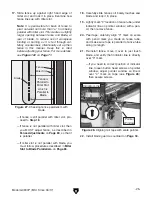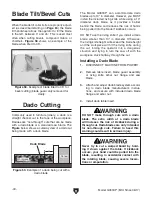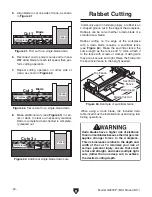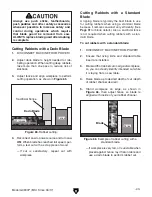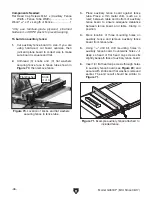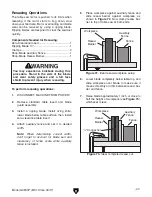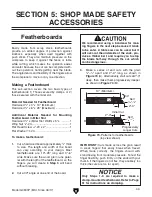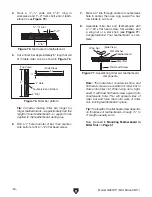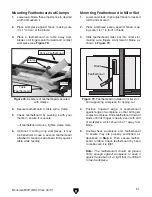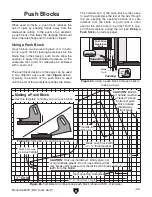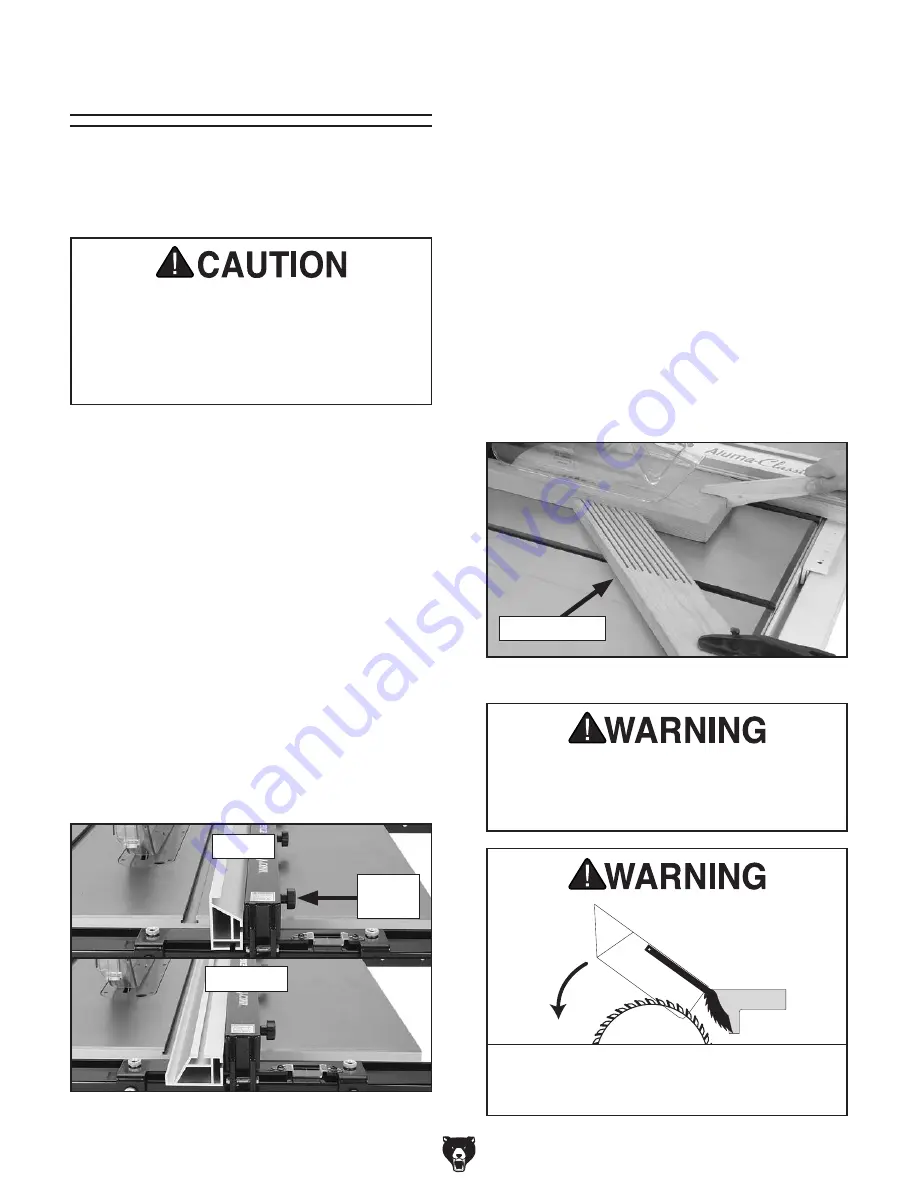
-38-
Model G0833P (Mfd. Since 06/17)
Figure 55. Typical ripping operation.
6. Set fence to desired width of cut on scale.
7. Adjust blade height so highest saw tooth pro-
trudes no more than
1
⁄
4
" above workpiece.
8. Set up safety devices such as featherboards
or other anti-kickback devices, making sure
no safety devices are contacting blade.
9. Plug saw into power source, turn it ON, and
allow it to reach full speed.
Note: Jointed edge of workpiece must slide
against fence during cutting operation.
10. Use push stick to feed workpiece through
saw blade, as shown in
Figure 55, until
workpiece is completely beyond saw blade.
To make a rip cut:
1. Review Preventing Kickback on Page 12
and take necessary precautions to reduce
likelihood of kickback.
2. If using natural wood, joint one long edge of
workpiece on a jointer.
3. DISCONNECT MACHINE FROM POWER!
4. Ensure that blade guard/spreader is installed.
5. Loosen fence knobs (see Figure 54), remove
rip fence, then re-install in vertical position for
thicker workpieces, or in horizontal position
for thinner workpieces and angled cuts where
blade is tilted over fence. Lift fence up and
tighten each fence knob.
"Ripping" means cutting with the grain of a natural
wood workpiece. In man-made materials such as
MDF or plywood, ripping means cutting length-
wise.
Ripping
Keep blade guard installed and in down
position. Failure to do this could result in
serious personal injury or death.
Turn saw OFF and allow blade to come to a
complete stop before removing cutoff piece.
Failure to follow this warning could result in
severe lacerations or amputation.
Serious injury can be caused by kickback.
Kickback is a high-speed ejection of stock
from table saw toward an operator. The
operator or bystanders may be struck by fly-
ing stock, or operator’s hands can be pulled
into blade during kickback.
Vertical
Horizontal
Figure 54. Rip fence positions.
Knob
(1 of 3)
Featherboard
Summary of Contents for Polar Bear G0833P
Page 92: ......


